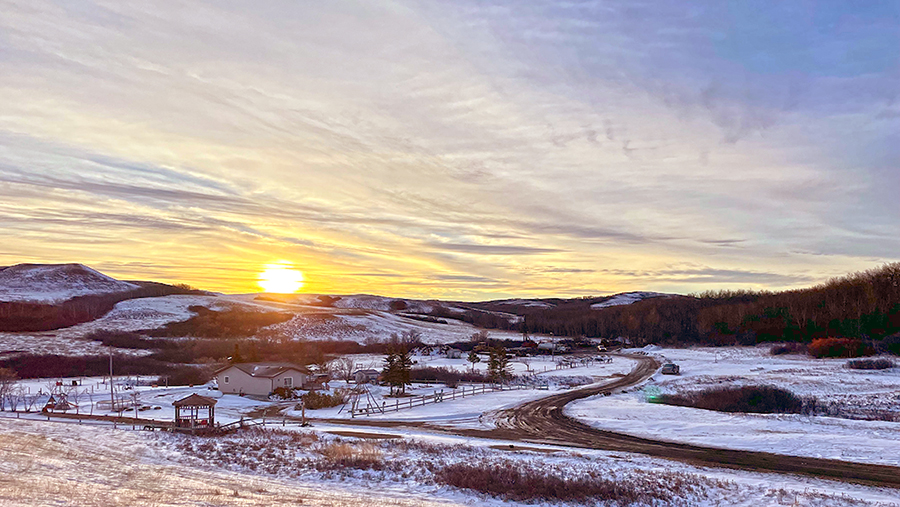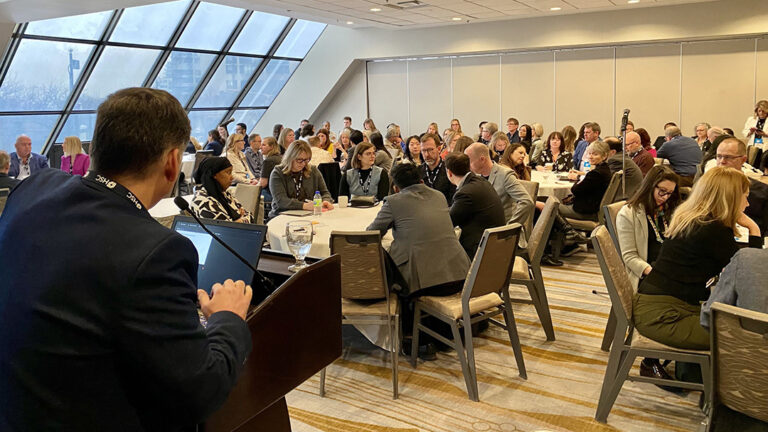In my experience, living on the reserve is not easy, but it is a different and holistic experience. I live on the Wood Mountain Lakota First Nation; this is the place I call home. The houses here may be small, but they are filled with our loved ones. The wind may blow through every crack and window, more reason to make some hot cocoa and sit in front of the television. On my reserve, we used to get food boxes every month, nothing big but enough to hold you over till you could make the journey to the city. Going to the city is not always convenient, it is a far drive and a long way away. So, for food, we may pack up the kids and head into the bush. I used to hate hunting, it is a lot of work and dressing the animal right there in the field is not pleasant. With time, I have grown to enjoy it. I look forward to the family spending time together on the land, there is something about connecting yourself to the land that makes you feel home.
Generations-old issues
However, the good does not always outweigh the bad, it has been the case for generations now. We have encountered struggles accessing clean safe drinking water. Our bodies must adjust to the water, we cannot drink or cook with the water from our taps, the well water is not clean enough. There is a small water plant we can get safe drinking water from but it’s not ideal, hopefully the new one will be better.
The windows, the roof and basement need to be finished but they are not on the list of priorities. The power flickers, possibly because of wiring issues? We often don’t have power at all, so I do not complain because it is nice when we do. The bills are alarmingly expensive. Propane to heat the home is always expensive. If the snowplough does not come right away, we are snowed in till it does.
My dad lived in a small house. It reminded me of the little house on the prairie. His basement was not finished and shifting in the ground caused severe damage. He was moved from one troublesome unfinished home to another one, causing a greater decline in his health. The second home he was moved to had another unfinished basement. When mice started coming in, he got cats to deal with the mice problem. However, he was diagnosed with Chronic obstructive pulmonary disease (COPD) which is a chronic inflammatory lung disease that causes obstructed airflow from the lungs. Maintaining cats was less than ideal in his situation, but it did not stop him from trying. His health got worse. He had to move to be closer to the doctor, he rented a small apartment close to hospitals. The struggles he faced on, and off reserve caused him to pass away sooner than expected.
Land & home ownership
Renting or owning a house on reserve is possible, but land ownership is not possible. The land is owned by the crown and set aside for Indian use, it is only governed by chief and council, they do not own it either. Home ownership on First Nations is only possible if you have a certificate of possession from Chief and Council, a letter saying they own the house on that land, and then you can apply to the crown to have the land surveyed. It is a very lengthy process which usually only occurs if the reserve is large enough, many are not.
Are programs bridging the gap?
Only some banks have programs to lend to First Nations and bands. In addition, some reserves have a tenant program, that generate revenues that can be used to repair current housing or invest in new housing.
There are also funding opportunities set up by Canada Mortgage and Housing Corporation, with one dedicated for On-Reserve housing. The On-reserve Non-Profit Housing Program is accessible to all First Nations Communities, it helps build affordable rental housing on-reserve.
There may even be pressure on Band Councils to provide culturally friendly, energy-efficient, spacious housing for Indigenous people to prevent overcrowding in homes on reserve. Housing, community infrastructure (such as water, wastewater treatment and other), and innovative opportunities for financing and more effective collaborative strategies have been a priority for the government of Canada since 2015, according to an Interim Report of the Standing Senate Committee on Aboriginal Peoples.
Yet, seven years later, in December 2022, Indigenous Corporate Training released a blog post that goes over 8 current issues with on-reserve housing. These include the fast-growing population causing overcrowding and health concerns, homes being in a remote environment, communities having inadequate water infrastructure, and difficulties in obtaining insurance.
Another report issued in June 2022 by the House of Commons’ Standing Committee on Indigenous and Northern Affairs, The Effects of the Housing Shortage on Indigenous People in Canada, suggests that there is still a lot of work to be done:
“Families are deprived of rest and sleep, and there is a loss of education due to the high cost of utilities, which has increased dramatically in the last number of months. Sometimes families must choose between heating and lighting their homes and buying food,” writes Stan Delorme, Chairperson of Buffalo Lake Métis Settlement. The report also underlines that “Indigenous households have a rate of core housing need of 18%, compared to the national average of 12.7%. The 2016 Census found that half of all Indigenous People live in a dwelling in need of repairs and in August 2021, the Assembly of First Nations estimated the need on reserves at 55,000 new housing units and 81,000 renovations.”

Home for Indigenous by Indigenous
What is required is a commitment from everyone in our communities to take steps towards a common vision of for-Indigenous-by-Indigenous housing policies. This is the route I decided to follow when I signed up for an internship with the Community Housing Transformation Centre. Since then, my belief in the validity of this proposal only deepened.
For Indigenous, by Indigenous housing is how my home will be happy, safe, holistically connected, permanent, and immutable. For most people, going home involves seeing mom and dad, grandma and grandpa. Because those people are no longer with me, I feel their spirit when I walk the hills around me. I feel the history and power in the stories once shared with me. This is the place where I want my children to grow up, I want them to know this holistic feeling. And if they ever lose me, they have this small “rez house” and the land that surrounds it to bring up their spirits. A teaching my dad taught me was the more we connect ourselves to the land, the more power we have to feel those who have passed on. He said, “my spirit lives on through you” and so by connecting myself, I find myself home.



